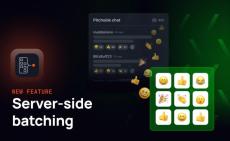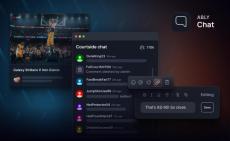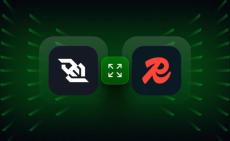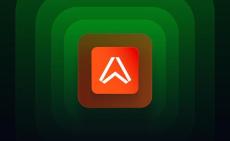|
By Matthew O'Riordan
What it means to be a fan is changing. Whether the fandom focuses on a sports team, a streaming drama series, or a musical artist, fans no longer want to be passive consumers. Instead, they’re looking to feel as though they are a part of the action through channels such as live chat, realtime stats, and behind the scenes insights. But there’s a tension in delivering those fan engagement experiences. Without the right strategy, technology costs can quickly make them economically unviable.
|
By Matt Hammond
Fandom is now global. And the extraordinary opportunity that presents is balanced by the demands that fan expectations place on your digital platform. No matter where they are–front-row seats or five timezones away–people engage with your fan experience to enjoy an immersive, immediate experience. However, as more fans take part, you might find that your platform hits a reliability and scale ceiling.
|
By Faye McClenahan
High-scale, high-frequency messaging and burst activity can lead to significant costs and performance challenges for realtime applications. Trying to solve for these spikes places additional cognitive load on development teams, slowing down development times. And because of this, all too often, developers have to shelve adding new features to their product. To solve this issue, we've introduced a powerful and simple-to-use cost optimization feature into Ably Pub/Sub: server-side message batching.
|
By Matthew O'Riordan
The Australian Open (AO) is one of the world’s premier annual sporting events. According to Tennis Australia, the 2024 edition - held over three weeks - reached over 558 million unique global viewers, a 57% increase from the previous year, and accumulated more than 2.17 billion cumulative viewers, up 24%. The event also attracted a record-breaking 1,110,657 fans to Melbourne Park.
|
By Faye McClenahan
We're happy to announce the release of message editing and deletion in our Javascript and React SDKs and within our NEW iOS and Android SDKs for Ably Chat. These additions will enable the development of richer chat experiences and simplify the development of cross-platform chat applications.
|
By Marti Markov
In light of the recent deprecation of MongoDB Atlas Device Sync (ADS), developers are seeking alternative solutions to synchronize on-device data with cloud databases. Ably LiveSync offers a potential alternative and can replace some of ADS’s functionality, enabling realtime synchronization of database changes to devices at scale.
|
By Steven Lindsay
There is increasing demand for realtime data delivery as users expect faster experiences and instantaneous transactions. This means not only is lower latency required per message, but providers must also handle far greater capacity in a more globally-distributed way.
|
By Faye McClenahan
Following the deprecation of Realm, we have partnered with MongoDB to ensure that MongoDB customers can continue to deliver the device sync capabilities their customers depend on. The solution: a MongoDB Connector for the Ably LiveSync product. Ably LiveSync enables you to seamlessly fan-out your MongoDB Atlas state to billions of clients in realtime - ensuring reliable, low-latency delivery of your document data.
|
By Zak Knill
When you publish a message to Ably Pub/Sub, you can be confident that the message will be delivered to subscribing clients, wherever they are in the world. Ably is fast: we have a 99th percentile transmit latency of <50ms from any of our 635 global PoPs, that receive at least 1% of our global traffic. But being fast isn’t enough; Ably is also dependable and scalable. Ably doesn’t sacrifice data integrity for speed or scale; it’s fast and safe.
|
By Paddy Byers
This is one of a series of posts that explain Ably’s four pillars of dependability. The four pillars project at Ably is about making concrete, objectively verifiable, statements about the technical characteristics of the service. We aim to ensure that our claims about service performance are expressed clearly in terms of explicit metrics, and we explain in technical terms how those performance levels are met.
|
By Ably
Tom Camp, DevRel Engineer at Ably takes you through a tutorial of adding live cursors to your application using Ably's latest product, Spaces.
|
By Ably
Tom Camp, DevRel Engineer at Ably takes you through a tutorial of adding live cursors to your application using Ably's latest product, Spaces.
|
By Ably
React Server Components (RSCs) seem to be everywhere lately, but what problem do they really solve? In this video, Alex Booker from Ably (@CodeCast) explores RSCs from scratch, revealing the motivation and benefits behind them. You might be surprised to learn - they're not merely a React feature, but a fundamentally new model for building full-stack React applications with meta frameworks like Next 13.4 by Vercel.
|
By Ably
Their platform is used by companies like Deutsche Bahn to host virtual and hybrid events, from webinars to conferences with tens of thousands of online concurrent participants.. In this interview, Erik Gullestad, co-founder and CTO of InvitePeople talks about his experience building an event management platform and about InvitePeople’s success with Ably.
|
By Ably
Tom Camp, DevRel Engineer at Ably takes you through a tutorial of adding an avatar stack to your application using Ably's latest product, Spaces. An avatar stack is a visual representation of a user’s presence - showing them as online and connected. They are the most common way of showing the online status of members in an application by displaying an avatar for each member. Events are emitted whenever a member enters or leaves a space, or updates their profile data.
|
By Ably
In this WebSocket tutorial, Alex Booker from Ably (@CodeCast) teaches you how to implement realtime updates in your React applications. Here, we use React on the frontend and Node on the back to build a live cursors feature from scratch, but the fundamental WebSocket lessons can be applied to any manner of realtime application. WebSockets are a bidirectional full-duplex communication protocol used to enable realtime updates such as chat, multiplayer collaboration, notifications, and other live updates in your React applications.
|
By Ably
Learn how to use Ably Presence to understand when your application users are online and allow them to share their current status.
|
By Ably
What do Microsoft Word and Adobe have in common? Both had their established market spaces completely disrupted by new entrants that brought realtime collaboration to the user experience. Whilst the barrier to entry for adding features akin to Figma, Google Docs, and Miro had been high, it is now possible to build new collaborative applications, or even simply add collaborative features to existing applications - without building the realtime infrastructure.
|
By Ably
Learn more about Ably's newest Product, Spaces. Spaces makes it easier to build collaboration features such as Avatar Stacks, Shared Cursors, Component Locking, and more. This video is the first in a series of exploring getting started with each of the Spaces features, subscribe to see when the next videos are released.
|
By Ably
When Figma arrived with multiplayer editing back in 2016, it wasn't at all obvious it would be successful - in fact, designers kind of hated the idea of "hovering art directors". Fast forward to 2023, and designers can't imagine another way.
|
By Ably
Take a view into the universe of realtime transport APIs in 2019. How do they stack up against realtime expectations? The report looks at ten cities across the globe, scoring and ranking them on ten indicators of maturity. Learn what the pioneers are doing, what those just starting on their Realtime API journeys can do better, and find actionable recommendations for your own Realtime API program.
|
By Ably
Online gamers have the most demanding realtime expectations. Mobile gaming now the largest sector of app store purchases, accounting for 42% of a $109 billion marketplace. It's vital that game developers offer a level of mobile performance that delivers an optimum realtime experience for every user. This white paper highlights some of the UX issues that can undermine your company's ability to do this effectively.
|
By Ably
I watch sports for a living. I couldn't tell you the last time I watched a baseball game from beginning to end. Data is one of the most valuable resources around. But data is no longer something that languishes in a database to be looked at later. Like sports events, data is now live. The sports industry can reap and build on innovations in the realtime data space. But this is no long a nice-to-have. Driven by changing fan behaviour this is now a commercial imperative.
|
By Ably
Sports and gaming app users demand an uninterrupted, true realtime experience. Almost 90% of US adults now use a mobile device while watching sports. In competitive arenas with similar offerings, like betting or sports, then you absolutely cannot afford to deliver poor mobile experiences. Customer experience is the new competitive battleground and realtime mobile experiences are an essential part of that.
- February 2025 (2)
- January 2025 (4)
- December 2024 (2)
- November 2024 (5)
- October 2024 (2)
- September 2024 (2)
- August 2024 (1)
- July 2024 (5)
- June 2024 (5)
- May 2024 (2)
- April 2024 (1)
- February 2024 (2)
- January 2024 (7)
- December 2023 (4)
- November 2023 (14)
- October 2023 (12)
- September 2023 (9)
- August 2023 (8)
- July 2023 (14)
- June 2023 (10)
- May 2023 (5)
- April 2023 (3)
- March 2023 (4)
- February 2023 (5)
- January 2023 (7)
- December 2022 (1)
- November 2022 (3)
- October 2022 (4)
- September 2022 (7)
- August 2022 (6)
- July 2022 (2)
- June 2022 (7)
- May 2022 (8)
- April 2022 (6)
- March 2022 (8)
- February 2022 (4)
- January 2022 (7)
- December 2021 (5)
- November 2021 (6)
- October 2021 (6)
- September 2021 (3)
- August 2021 (5)
- July 2021 (3)
- June 2021 (8)
- May 2021 (5)
- April 2021 (6)
- March 2021 (3)
- February 2021 (2)
- January 2021 (1)
- December 2020 (2)
- November 2020 (1)
- August 2020 (1)
- July 2020 (2)
- February 2020 (1)
- January 2020 (2)
- June 2019 (1)
- April 2019 (1)
- March 2019 (1)
- December 2018 (1)
- October 2018 (4)
Ably is a pub/sub messaging platform with a suite of integrated services to deliver complete realtime functionality directly to end-users. Every day we guarantee low latency delivery of billions of messages to more than 50 million devices over a secure, reliable, and highly available global edge network.
Build, deliver and scale any realtime application without managing global infrastructure.
- Build your realtime applications with our simple yet powerful SDKs and APIs for cross-platform, multi-protocol pub/sub messaging with device presence and stream history.
- Deliver to your end-users no matter where they are with ordering and delivery guarantees over our global edge network.
- Scale with confidence from day one with our fault tolerant, high-elastic infrastructure and 99.999% uptime SLAs.
- Extend your realtime capabilities beyond simple pub/sub with our additional features and rich library of third-party integrations for services like AWS Kinesis.
Build realtime features you can trust to deliver at scale.

























